Related Research Articles

The Epipalaeolithic Near East designates the Epipalaeolithic in the prehistory of the Near East. It is the period after the Upper Palaeolithic and before the Neolithic, between approximately 20,000 and 10,000 years Before Present (BP). The people of the Epipalaeolithic were nomadic hunter-gatherers who generally lived in small, seasonal camps rather than permanent villages. They made sophisticated stone tools using microliths—small, finely-produced blades that were hafted in wooden implements. These are the primary artifacts by which archaeologists recognise and classify Epipalaeolithic sites.
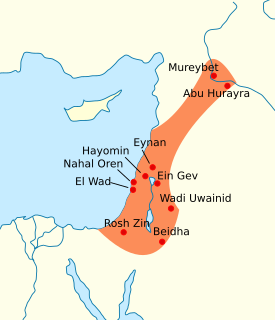
The Natufian culture is a Late Epipaleolithic archaeological culture of the Levant, dating to around 15,000 to 11,500 years ago. The culture was unusual in that it supported a sedentary or semi-sedentary population even before the introduction of agriculture. The Natufian communities may be the ancestors of the builders of the first Neolithic settlements of the region, which may have been the earliest in the world. Natufians founded a settlement where Jericho in Palestine is today, which may therefore be the longest continuously inhabited urban area on Earth. Some evidence suggests deliberate cultivation of cereals, specifically rye, by the Natufian culture, at Tell Abu Hureyra, the site of earliest evidence of agriculture in the world. The world's oldest evidence of bread-making has been found at Shubayqa 1, a 14,500-year-old site in Jordan's northeastern desert. In addition, the oldest known evidence of beer, dating to approximately 13,000 BP, was found at the Raqefet Cave in Mount Carmel near Haifa in Israel.

The Xianren Cave, together with the nearby Diaotonghuan rock shelter, is an archaeological site in Dayuan Township (大源乡), Wannian County in the Jiangxi province, China and a location of historically important discoveries of prehistoric pottery shards and it bears evidence of early rice cultivation. The cave's name refers to the legendary Chinese enlightened people, the Xian "immortals". The cave is 7 m (23.0 ft) high, 11 m (36.1 ft) wide, and 14 m (45.9 ft) deep.
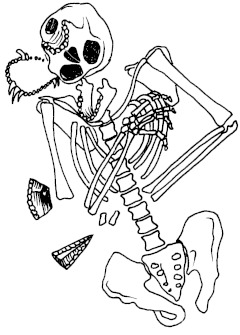
Kebara Cave is an Israeli limestone cave locality in Wadi Kebara, situated at 60 to 65 m above sea level on the western escarpment of the Carmel Range, in the Ramat HaNadiv preserve of Zichron Yaakov.

Ofer Bar-Yosef was an Israeli archaeologist and anthropologist whose main field of study was the Palaeolithic period.
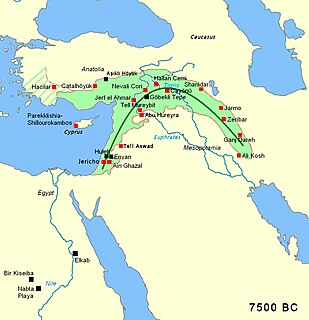
The Pre-Pottery Neolithic (PPN) represents the early Neolithic in the Levantine and upper Mesopotamian region of the Fertile Crescent, dating to c. 12,000 – c. 8,500 years ago,. It succeeds the Natufian culture of the Epipalaeolithic Near East, as the domestication of plants and animals was in its formative stages, having possibly been induced by the Younger Dryas.

Netiv HaGdud is an Israeli settlement organized as a moshav in the West Bank. Located in the Jordan Valley around twenty kilometres north of Jericho, it falls under the jurisdiction of Bik'at HaYarden Regional Council. In 2019 it had a population of 212.

HaYonim Cave is a cave located in a limestone bluff about 250 meters above modern sea level, in the Upper Galilee, Israel.
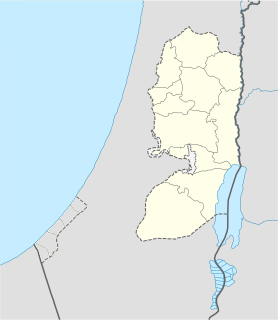
Gilgal I is an archaeological site in the Jordan Valley, West Bank, dated to the early Neolithic period. The site is located eight miles north of ancient Jericho. The features and artifacts unearthed at Gilgal I shed important light on agriculture in the Levant. The by far oldest domesticated figs found anywhere in the world were recovered from an incinerated house at the site, and have been described as coming from cultivated, as opposed to wild, fig trees.

The Nachcharini cave is located at a height of 2,100 m (6,889.76 ft) on the Nachcharini Plateau in the Anti-Lebanon mountains near the Lebanese/Syrian border and among the most elevated Natufian and Khiamian hunter-gatherer occupation sites found to date.

Jabal es Saaïdé, Jabal es Saaide, Jabal as Sa`idah, Jabal as Sa`īdah, Jebal Saaidé, Jebel Saaidé or Jabal Saaidé is a Mountain in Lebanon near the inhabited village of Saaïdé, approximately 12 kilometres (7.5 mi) northeast of Baalbek, Lebanon.

Abu Madi(Arabic:أبو ماضي) is a cluster of prehistoric, Neolithic tell mounds in Southern Sinai, Egypt. It is located east of Saint Catherine's Monastery at the bottom of a granite ridge. It was suggested to have been a seasonal encampment for groups of hunter gatherers and contained the remains of two major settlements; Abu Madi I and Abu Madi III. Abi Madi I is a small site with the remains of a partially buried 4 metres (13 ft) building containing deposits up to a depth of 1.3 metres (4.3 ft). Abu Madi III was an area of roughly 20 square metres (220 sq ft) that was excavated close to a large nearby boulder. Dwellings were found to have stone built silos next to them. It was first excavated in the early 1980s by Ofer Bar-Yosef.
Adrian Nigel Goring-Morris is a British-born Archaeologist and a Professor at the Hebrew University of Jerusalem in Israel. He completed his PhD there in 1986 and is notable for his work and discoveries at one of the oldest ritual burial sites in the world; Kfar HaHoresh. The earliest levels of this site have been dated to 8000 BC and it is located in the northern Israel, not far from Nazareth.
Avi Gopher is an Israeli archaeologist. He is a professor at the University of Tel Aviv.

Ard Tlaili or Tell Ard Tlaili is a small tell mound archaeological site in a plain at the foot of the Lebanon Mountains 11 km (7 mi) northwest of Baalbeck, in the Beqaa Valley in Lebanon.

Qdeir is a prehistoric, Neolithic Tell and plateau in the El Kowm oasis, a 20 km (12 mi) gap in the Syrian mountains that houses a series of archaeological sites. It is located northeast of Palmyra in Syria, near Al-Sukhnah.
Moshe Stekelis was a Russian born archaeologist who excavated the Neolithic Yarmukian culture at Sha'ar HaGolan.
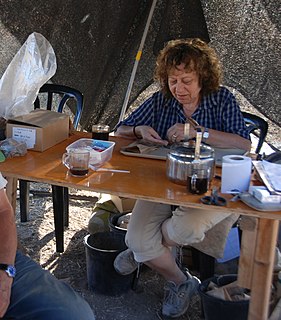
Anna Belfer-Cohen is an Israeli archaeologist and paleoanthropologist and Professor Emeritus at the Institute of Archaeology, The Hebrew University of Jerusalem. Belfer-Cohen excavated and studied many important prehistoric sites in Israel including Hayonim and Kebara Caves and open-air sites such as Nahal Ein Gev I and Nahal Neqarot. She has also worked for many years in the Republic of Georgia, where she made important contributions to the study of the Paleolithic sequence of the Caucasus following her work at the cave sites of Dzoudzuana, Kotias and Satsrublia. She is a specialist in biological Anthropology, prehistoric art, lithic technology, the Upper Paleolithic and modern humans, the Natufian-Neolithic interface and the transition to village life.
The Neolithic demographic transition was a period of rapid population growth following the adoption of agriculture by prehistoric societies. It was a demographic transition caused by an abrupt increase in birth rates due to the increased food supply and decreased mobility of farmers compared to foragers. Eventually the mortality rate in farming societies also increased to the point where the population stabilised again, possibly because settling down in one place, in close proximity to animals, encouraged the spread of zoonotic and waterborne diseases. The transition is estimated to have taken about a thousand years on average, although the onset and duration of the transition varied widely in the different parts of the world.
Trevor Watkins is a British archaeologist and emeritus professor of Near Eastern prehistory at the University of Edinburgh. He has worked extensively on the Neolithic Revolution in Southwest Asia, including translating Jacques Cauvin's seminal work The Birth of the Gods and the Origins of Agriculture into English.
References
- ↑ Bar-Yosef, Ofer; Gopher, Avi; Tchernov, Eitan; Kislev, Mordechai E. (1991). "Netiv Hagdud: An Early Neolithic Village Site in the Jordan Valley". Journal of Field Archaeology. 18 (4): 405–424. doi:10.2307/530405. ISSN 0093-4690.